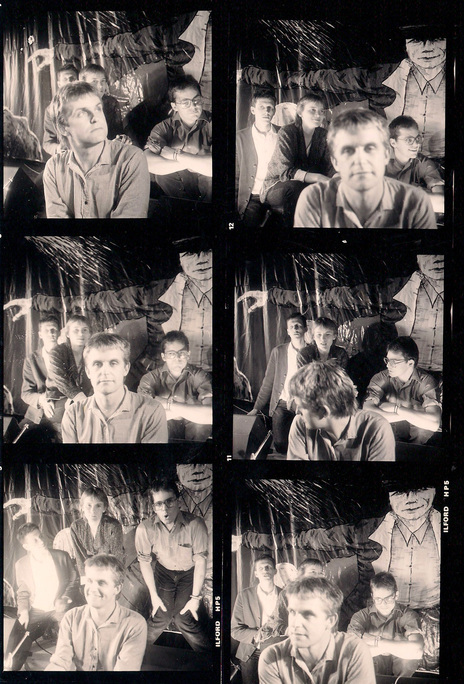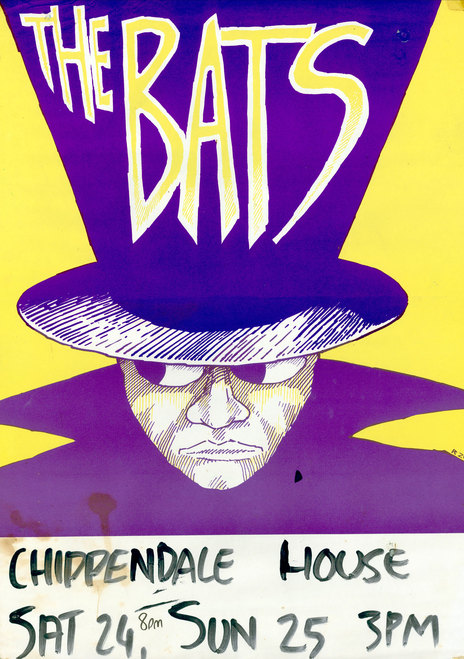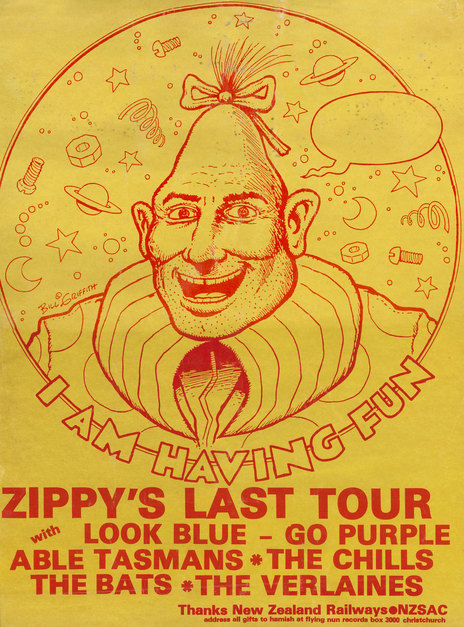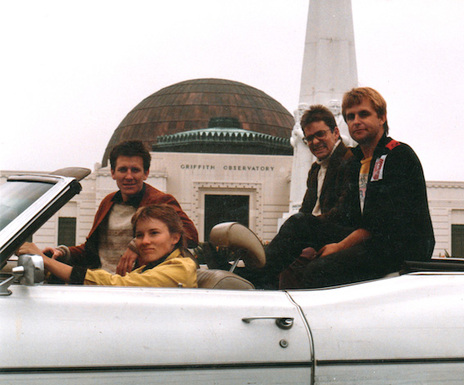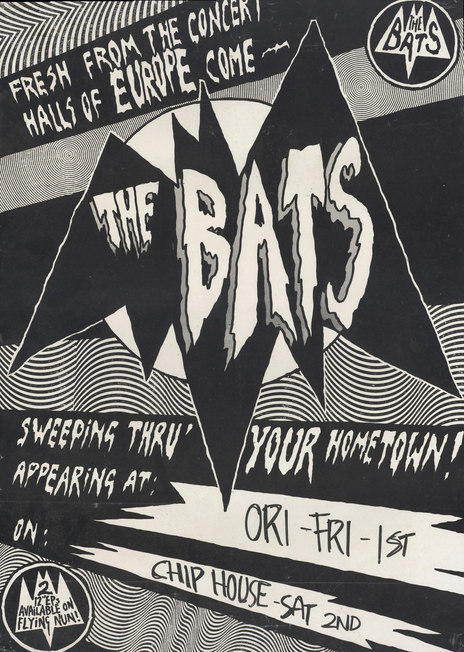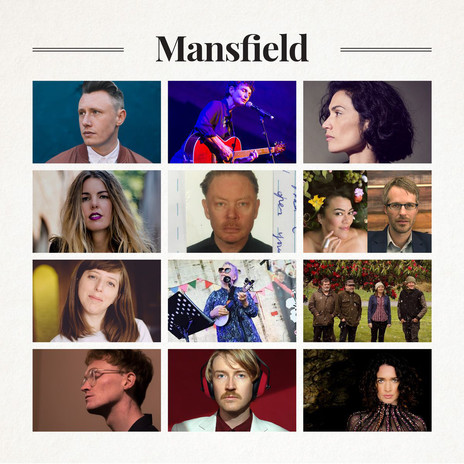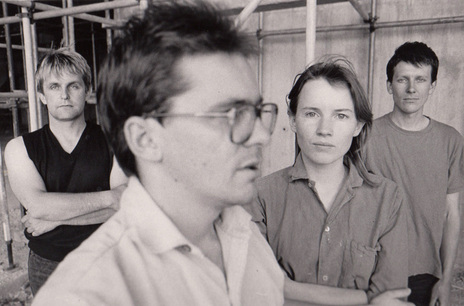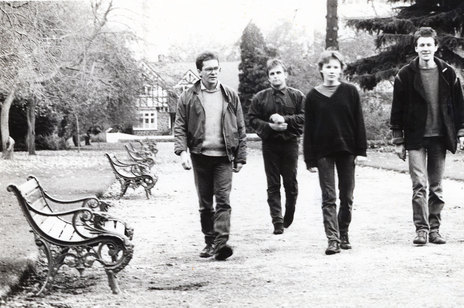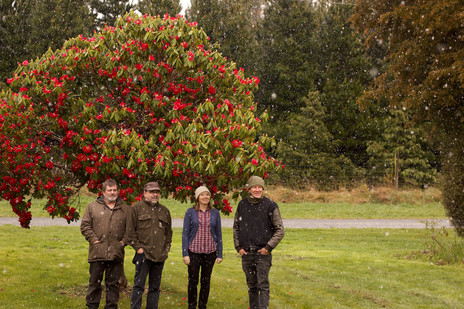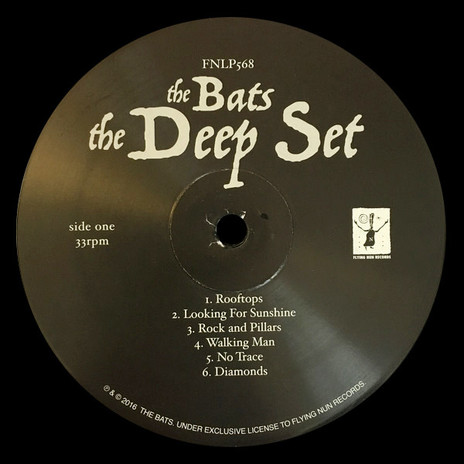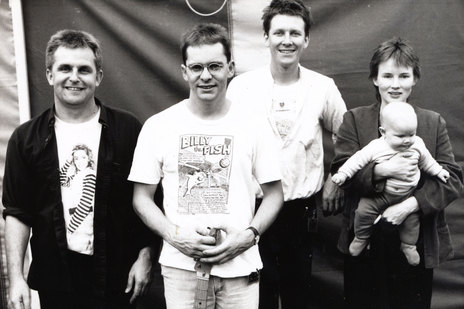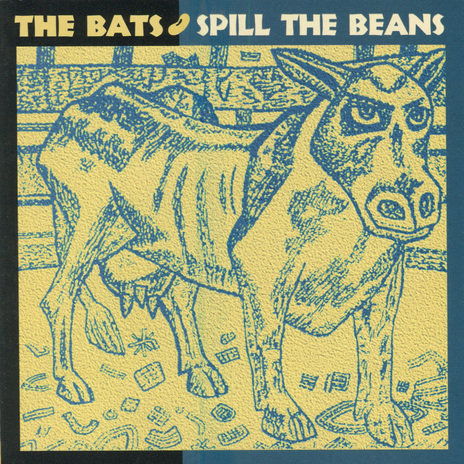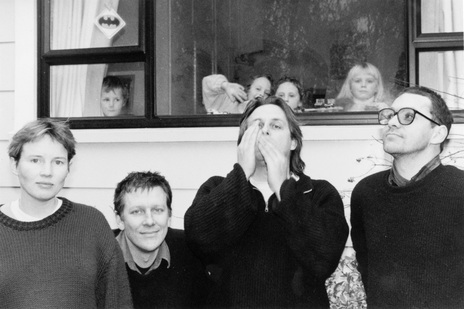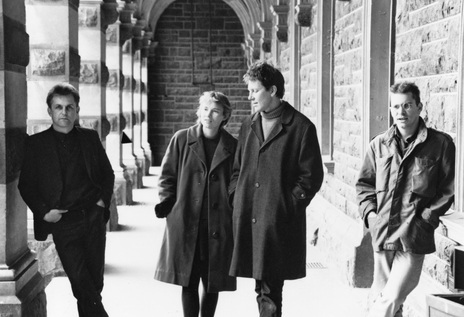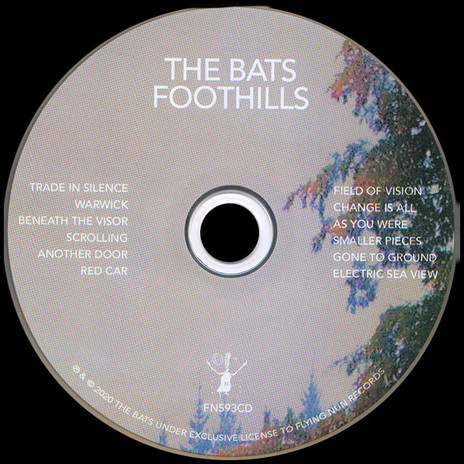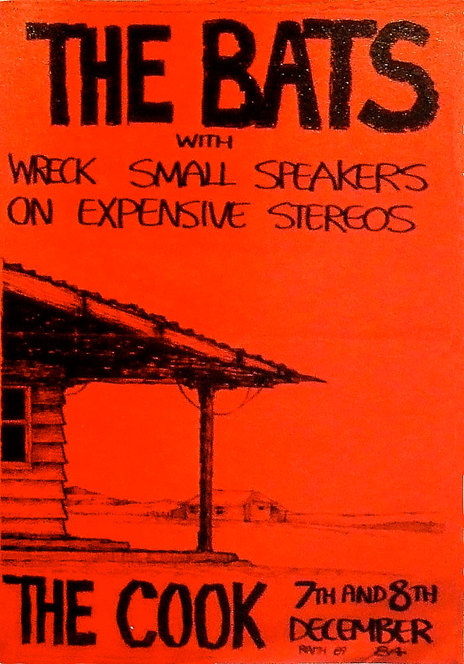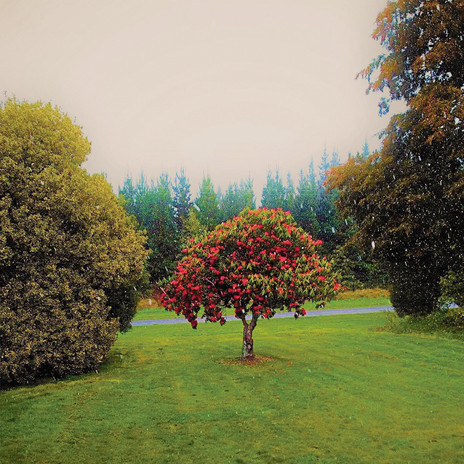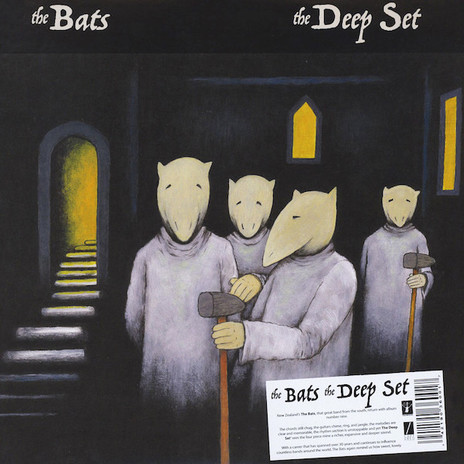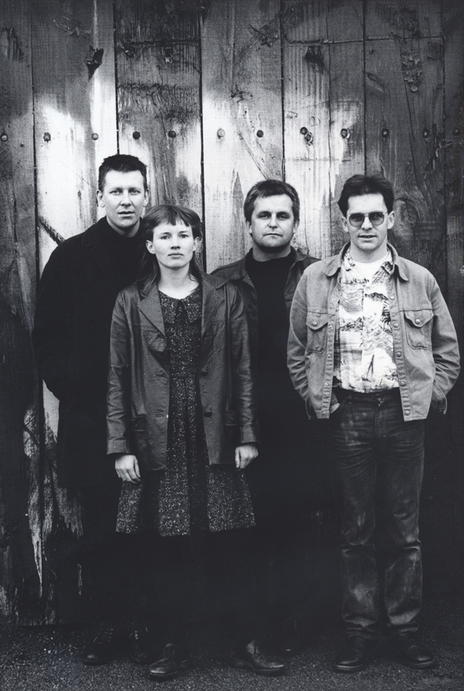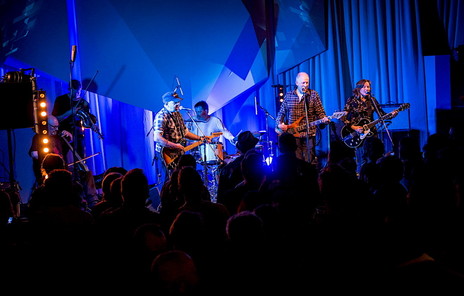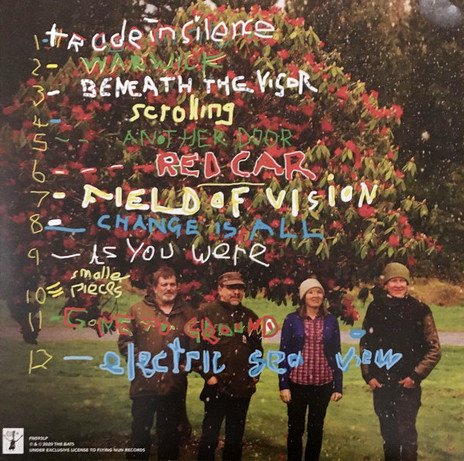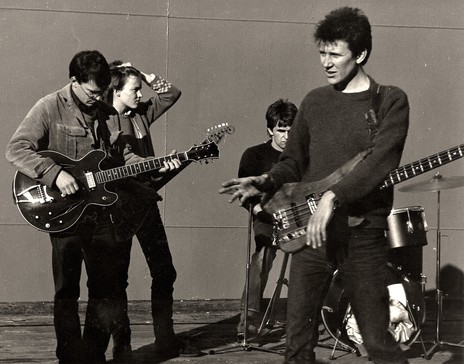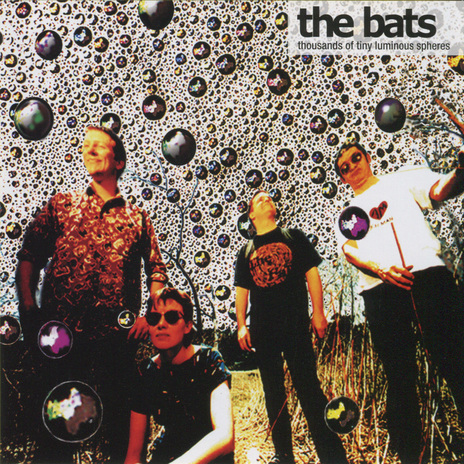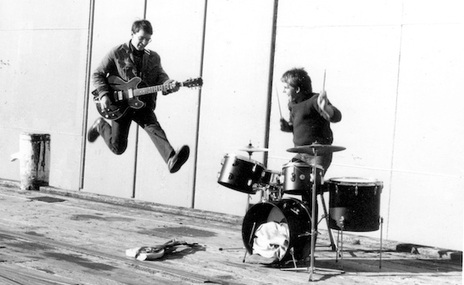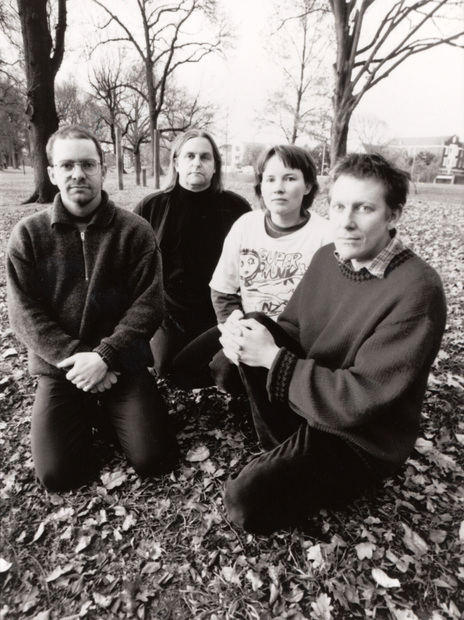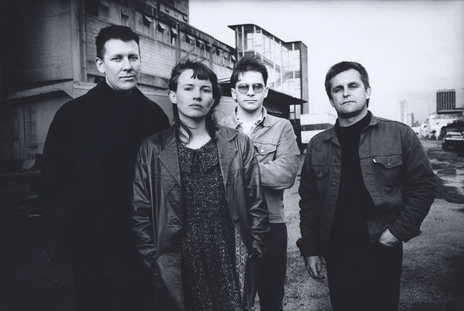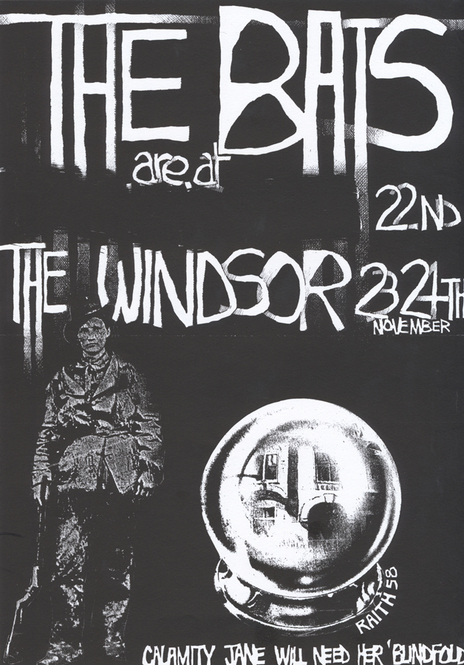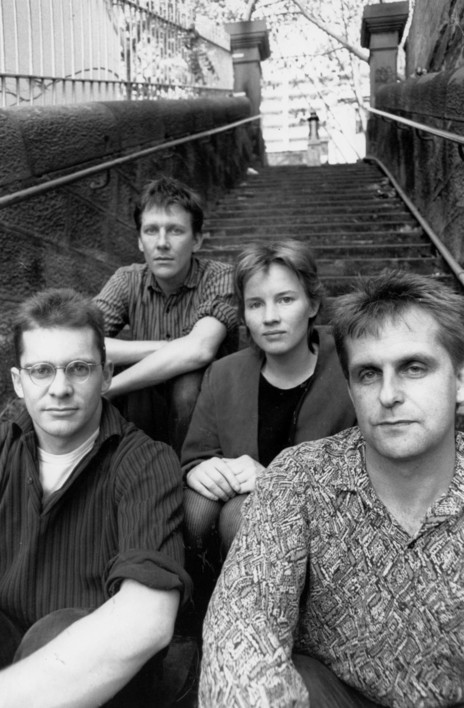It’s an output that is as single minded a musical vision as four people can produce – the work of a band that was at the forefront of Flying Nun’s international push in the late 80s and early 90s before they retrenched to their twin South Island bases of Christchurch and Dunedin (from where they continue to operate).
The origins of The Bats lie in two illustrious NZ groups: The Clean and Toy Love.
The origins of The Bats lie in two illustrious late 70s/early 80s NZ groups – The Clean and Toy Love. When The Clean somewhat prematurely disbanded in 1982, bass player Robert Scott was left without a band. Looking for an outlet for his own songs, he began playing guitar and his flatmate Kaye Woodward – herself an aspiring guitarist – started adding her own parts.
Meanwhile, Scott also appeared in the short-lived Thanks To Llamas with Paul Kean, Jane Walker and Donna Sheen. Kean was lying low in Christchurch after the dissolution of Toy Love – performing with The Playthings and mixing sound for passing Flying Nun bands. Several impromptu performances featuring Scott, Woodward and Kean followed under the unlikely name of The Percy Taiwan Band. The Bats were born when Scott and Woodward moved into the same flat as Kean and drummer (and Bill Direen fellow traveller) Malcolm Grant.
The new band debuted at The Empire in Dunedin on New Year’s Eve in 1982. Progress was initially restricted to performances at parties with a growing repertoire of Robert Scott penned songs alongside covers of ‘The Munsters Theme’, some Creedence Clearwater Revival tunes and Mike Nesmith’s ‘Different Drum’. This rural inclination led Scott and Woodward to approach the producers of the Nashville focused TVNZ series That’s Country but they were promptly rebuffed.
The Bats recorded their first EP with Arnold van Bussel at Nightshift Studio in Christchurch in 1984. The production was less than stellar but the elements that would characterise their sound for the next three decades were already in place – the warm folky strum and jangle of Woodward and Scott’s guitars (with occasional sonic variation) and the interplay of their voices with Woodward’s pure harmonies behind Scott’s rapidly improving lead vocals, underpinned by an accomplished rhythm section in Kean and Grant – whose muscular live combination is often only hinted at in their recorded work.
The six-song By Night EP was released by Flying Nun in September that year and soon picked up airplay across the Tasman on JJJ.
Scott moved back to Dunedin in 1984 but geography didn’t hinder the band’s progress. An increasingly prolific songwriter, he began sending cassette demos of his new songs up to Christchurch for Woodward, Kean and Grant to develop. While the technology might have changed, The Bats have retained this way of working from their twin bases of Dunedin and Christchurch ever since – as a resolutely South Island band.
A second EP And Now Here Is Music For Firesides followed in 1985 and featured violin contributions from Alastair Galbraith. They recorded again at Nightshift but, even in the unashamedly lo-fi early days of Flying Nun, there was a feeling that the studio wasn’t doing the band too many production favours.
In 1986, The Bats took flight once more and spent three weeks in England, Scotland and Europe (dodging the disruption of Chernobyl as they traversed seven countries in 10 days). A recording session in London resulted in the Made Up In Blue EP (which earned them Single of the Week honours from the NME).
In Scotland they began recording their debut album. The remainder of the tracks for Daddy’s Highway were put down back in Christchurch at Nightshift with Alastair Galbraith again contributing violin. Arguably one of the most accomplished NZ albums of the 80s, it was a considerable step forward in production and contained at least one bona fide classic in ‘North By North’. It earned them favourable notice in Billboard and was the pre-concert music of choice for REM.
Progress then slowed with Woodward and Kean expecting their first child and Scott occupying himself with the reformed Clean. Recording for their second album started at the end of 1988 at Writhe Studio in Wellington but the release of The Law of Things was delayed until 1990.
the ‘daddy’s highway’ LP contained at least one bona fide classic in ‘North By North’.
With Flying Nun increasingly looking offshore, there was pressure on the band to use international producers. Fear of God, their third album, was recorded in Auckland with American Nick Sansano at the controls. In a climate of Gulf War paranoia, Sansano did the final mix back in New York without the band. The results were tougher and more polished than their previous outings. It was still very much a Bats album but a bit of their charm had possibly gone missing in the process.
A further tour of Europe and the USA in 1992 included the sessions for their fourth album Silverbeet which was recorded in Stoughton, Massachusetts with Nick Giordano (who had worked with The Pixies, Sugar, Hüsker Dü and Pere Ubu). The following year saw them back in the USA on the Noisyland Tour with Straitjacket Fits and The Jean Paul Sartre Experience.
Touring pressures began to take their toll and image building was making them uneasy (with one photo session makeover for Woodward raising hackles). A support slot on an American Radiohead tour was a turning point. "We looked at it and their life didn't look that comfortable. We were being packaged as something we weren't and being pushed around, so we pulled back”, Paul Kean told NZ Herald.
Pulling back saw them produce their fifth album back at Nightshift in Christchurch. Couchmaster channelled some of their frustrations in darker lyrics and a musical moodiness (particularly evident on the smouldering single ‘Afternoon in Bed’); but there was also something of a surprise with Woodward given a long overdue vocal lead on her song ‘Shoeshine’. Couchmaster was well received but, with little promotion, made few ripples and The Bats drifted away on what became a major hiatus. Scott continued to work with The Clean and his new Dunedin group The Magick Heads while Woodward and Kean had a family to support.
The prolific Scott released his first solo album The Creeping Unknown in 2000 while, in Christchurch, Woodward and Kean began playing with a drum machine as Minisnap. When the vagaries of technology proved too unreliable, Malcolm Grant sat in on drums.
In 2003 The Bats re-emerged. Following a national tour (with Minisnap as their opening act), a new album was recorded with former Sneaky Feeling John Kelcher at his studio in Christchurch. After 10 years, At The National Grid was a return to familiar form for a band who sounded like they’d never been away. Critic Russell Baillie could note in his NZ Herald review that “the phrase ‘bold new direction’ has gone unused once again” but also conclude that the album was “cohesive, curiously fresh and oddly in tune with the times”. The Guilty Office repeated the dose just three years later, this time on Auckland indie Arch Hill.
In 2011, they were back on Flying Nun with the release of their eighth album Free All The Monsters, recorded with producer Dale Cotton at the disused Seacliff asylum on the coast just north of Dunedin. After a career of producing themselves – and at least two not wholly satisfactory experiences with outsiders – they found a remarkably sympathetic partner in Cotton. The result was some of the richest and most rounded music they had created.
After three decades together, The Bats are a unique institution in NZ music. It’s hard to think of any other band with such longevity with an unchanged line-up. It hasn’t been a career founded on wild variation. Instead, it has been the soundtrack to a band growing ever more comfortable in its own skin.
– Michael Higgins
Highway to the Foothills
The Bats returned in 2017 with The Deep Set, their ninth studio album. Still in their original line-up, they recorded at Lyttelton studio The Sitting Room with Ben Edwards, who shared production duties with Paul Kean. This was a change in process for the usually self-produced group, but perhaps, not too much of a change.
“I think that is a very subtle thing, the interaction between producer and band,” Robert Scott told AudioCulture in late 2020. “For us and Ben it was more of a collaboration, we had a pretty good idea of what we wanted with the songs. I think maybe other bands would be more open to ideas from a producer than we can be.”
‘The Deep Set’ was reviewed very favourably at home and abroad.
Kean confirmed that Edwards gave a “gentle touch to the sound of the album”, and was particularly impressed with how he captured the drums. Other outside influences included Mikey Summerfield and John Chrisstoffels, who recorded strings with Kean at his home studio. Ahead of touring The Deep Set in 2017, Scott told Under the Radar, “The songs often lend themselves to strings in terms of adding an extra melodic element and texture.”
The Deep Set was reviewed very favourably at home and abroad, even taking out the top spot on Flying Nun’s own Albums of the Year list for 2017. “It is beautiful, contemplative and warm,” wrote Andrew Witty for NZ Musician in 2017. “‘Shut Your Eyes’ is a highlight, a sweet sombre lullaby with the addition of beautifully haunting melancholic strings. Dissonant, but comforting. ‘Antlers’, too is a wistful gem.”
The album was supported with a tour of New Zealand, Australia, Europe and the United Kingdom, which included accompaniment by a three-piece string section.
Throughout the years, The Bats have experienced many different styles of touring: from couch surfing, to staying in motels with their kids, to something in between. Speaking to AudioCulture in 2020, Kean noted that these days, touring is “kept to a healthy minimum that’s manageable and enjoyable”. The members have always been good at finding a balance, appreciating their families, work, and other creative projects, alongside their output with The Bats. “We’ve seen too many musicians falling into a sad and narrow life with a cycle of touring and recording endlessly. Their life often implodes on them.” It is easy to see how The Bats’ down-to-earth approach to artistry has contributed to their incredible longevity.
The Bats’ next release arrived in early 2020, as they contributed to Mansfield, a 12-song collection of New Zealand artists interpreting Katherine Mansfield’s poems to music. Curated by songwriter Charlotte Yates, the compilation also included performances from Delaney Davidson, Anna Coddington, Lawrence Arabia and Julia Deans, among others.
For their track, The Bats took Mansfield’s French-themed poem ‘Sanary’ and gave it a dreamy, atmospheric treatment, with Kaye Woodward elevating the sound with a characteristic guitar solo.
“Straight away, I was drawn into the story,” Scott told AudioCulture. “I was creating a picture in my head of the scene she [Mansfield] was describing … a hot sultry scene in the south of France; what she could see as she was writing. [The] wonderful evocative words created a strong picture. It was easy to be inspired.”
The Bats were very pleased to receive one of Mansfield’s poems based in France, a country they feel close to thanks to their touring experiences, says Kean.
Later in 2020, on November 13, The Bats released their 10th studio album, named Foothills. Scott had been tinkering on the new songs since 2018.
How does Scott’s songwriting with The Bats differ from other projects? “I feel I go into a zone, a different mode when I’m writing lyrics for The Bats,” he says. “I usually start with a melody or chord pattern and something springs to mind, maybe a story or an experience … I go a bit for wordplays and double meanings, known phrases that may resonate with people … I think with The Clean there is some crossover – it’s me so there must be – but I think working with David and Hamish [Kilgour] informs my thinking in a different way.”
After a few home-studio demo sessions and live test audiences, they set up a mobile studio in rural Canterbury for a week-long recording session. The album’s title, Foothills, was inspired by this idyllic setting, as the pop-up studio sat in the foothills of the Southern Alps, in a house usually occupied by ski field workers.
“We made the choice to return to working as The Bats on our own and isolated from distractions,” Kean said in 2020. “Half of Daddy’s Highway was done that way and it felt like for our 10th album it would be a good approach.”
Foothills was recorded in The Bats’ customary style, with the band setting up in one room together and playing live. Although the songs were written before they moved to the studio, the setting naturally had an influence on the end result.
‘Foothills’ was a hit with critics – including a four-star review from ‘Mojo’.
“[It was] very rural. cows mooing outside, the sound of chainsaws, magpies. And being able to go and walk outside amongst the trees between takes can help settle an overworked brain,” says Scott.
“We haven’t tended to repeat ourselves with returning to the same studio or place. Locations bring a uniqueness to the session,” adds Kean.
Foothills was a hit with critics – including a four-star review from Mojo, where Andy Fyfe commented that lead single ‘Another Door’ is “as distinctly fabulous as anything they have released in 40 years.” Reviewing for RNZ in December of 2020, Grant Smithies described the album as a “mix of wistful folk tunes” with “gentle psych rock undercurrent[s]” and “robust, grunty, pop melodies.” Smithies added: “To me, Kaye Woodward has always been the band’s secret weapon. She plays these great tremulous, heavy, lead-guitar breaks that are always concise and inventive.”
Foothills was treated to a beautiful, special edition on red vinyl, alongside its usual release formats, and supported by a national tour. Playing internationally was on hold for the group, whose 10th album sadly coincided with the Coronavirus pandemic. Despite the setbacks, 2020 was a very musical year for The Bats, as the members also pursued other projects: Sundae Painters for Woodward and Kean, and a collaboration with Dallas Henley for Scott.
A word one often hears in reference to The Bats is consistency – consistency in their unwavering line-up, their distinct style and their revered place in New Zealand indie music. Daddy’s Highway endures as a much-loved record, decades after its 1987 release. In 2010, Daddy’s Highway was treated to a remaster (by Kean), and re-release (by Flying Nun).
Discussing the album on its 30th birthday in 2017, Kean told Joseph Earp: “I’ve always thought people who were going through their teens, falling in love for the first time and stepping out onto their own chosen paths, embrace the music of their time through their exciting transition years … they tend to hold onto that music for their life.”
“I loved it at the time,” says Woodward. “But then I went off it a bit, thinking the recording wasn’t great as we went into the 90s and used some enormous desks. But now I love it again as I appreciate its range and character and how well the songs are expressed.”
While reviewing Foothills for RNZ, long-time fan Grant Smithies summed up the special quality that The Bats have found, and continue to find with every new release. “It strikes me that this is a band who are often patronised by reviewers, who always bang on endlessly about their longevity, consistency, dependability, in a way that implies some lack of innovation – which is not what I find in their songs, I find their songs something quite special … to marry these pretty breezy melodies to slightly uneasy lyrics.”
Smithies’ viewpoint mirrors that of The Bats themselves. “Funny thing is, the band feel the sound has evolved over the years” Kean said in late 2020. “It seems to be a fallback for reviewers to say we ‘still sound the same’. [The] good thing is that we sound distinctive and recognisable as having or own style.” – Updated by Rosie Howells, 2021
2025: Corner Coming Up
For their 11th album, The Bats set-up at Chicks Studio. The studio emerged from a popular live venue, Chicks Hotel, which had been a hub of the live scene in the previous decade, bringing to life a rundown heritage building that was filled with ghostly nooks and crannies across multiple floors. Paul Kean again took a central role in engineering the album, but this time he was joined by Tex Houston, with whome Robert Scott had recorded before in The Clean (Modern Rock, 1995); Houston’s work also included keystone albums by The 3ds and The Subliminals.
With its winding, noisy outro, The Bats’ next single ‘Loline’ hinted at The Clean’s explorative jamminess. The album itself – Corner Coming Up (2025) – extended from upbeat rock numbers (‘A Crutch A Post’ and ‘Corner Coming Up’) through to more laidback, reflective tracks like opener ‘The Gown.’ The band refused to put the album on Spotify, given the streaming site’s poor treatment of musicians and the fact money from the company was being invested in AI military drones. Yet, if anything, the album had more reach than the previous few releases, with Uncut magazine calling it “Sublimely crafted deadpan pop from Flying Nun founding fathers.”
They supported it with a national tour and a prime slot at the Others Way festival. In a brief but heartfelt review for the festival, the correspondent from bFM captured the cross-generational appreciation for the band: “I love The Bats. I made no notes. I was too busy dancing with my dad.” – Updated by Gareth Shute, December 2015
